Facebook Advertising Master Guide

A user base of more than 900 million people has helped Facebook become one of the top advertising platforms for marketers on the Web.
However, starting an advertising campaign on the world's most popular social network can be a bit overwhelming - especially for beginners. This is because Facebook is continuously launching new ways for businesses to connect with their fans.
In order to launch a successful campaign, marketers must not only be aware of basic best practices when it comes to advertising, but must also be up-to-date with the newest Facebook ad formats. This is why Website Magazine has created the Facebook Advertising Master Guide, complete with tips and tricks to help marketers plan their advertising campaigns.
Ad Formats
Before the campaign planning can begin, marketers must be familiar with Facebook's ad formats. This is because some formats are better at driving engagement, while other formats are better at creating conversions - and knowing about each format will help marketers choose the best fit for their brand. Learn about Facebook's current ad formats below:
Social Ads - These display ads encourage audience members to engage with a brand's Facebook media, which can include fan pages, apps or promoted events.
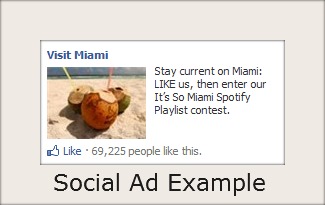
Web Ads - These ads are similar to Social Ads, but instead of sending audience members to a brand's Facebook media, Web Ads encourage audience members to engage with media outside of Facebook, such as a website.
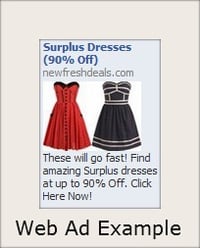
Post Ads - A Post Ad is essentially a brand's Facebook Post that is inserted into an advertisement to reach a specified audience.
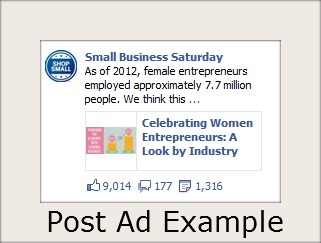
Sponsored Stories - Sponsored Stories are generated through the engagement that audience members have with a brand - which can include likes, comments, app interactions, shares, check-ins or an event RSVP.
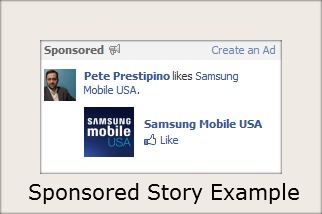
Facebook Offers - This newest way to advertise on Facebook enables marketers to essentially offer daily deals directly from their Facebook Page. Only Pages with at least 400 fans are allowed to post a Facebook Offer, which costs marketers a minimum of five dollars to run. The Offers can include any type of promotion or deal, and marketers have complete control over the terms and conditions.
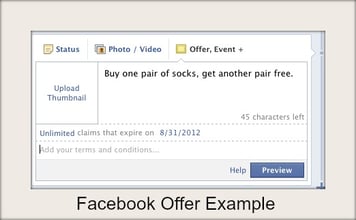
Audience Targeting
During the campaign planning process, marketers should also determine each ads' target audience. This is because Facebook provides many different variables that marketers can use to target specific consumers - including location, age, gender, interests and connections.
A good place to start when choosing a target audience is to outline the characteristics of an ideal consumer, which should include both demographics as well as interests. While broad categories for a target audience, such as location, age and gender, should be easy to determine, marketers must also think outside of the box to include Precise Interest targeting into their campaigns. This targeting strategy enables marketers to reach Facebook users based on their profile information, such as the pages they like and the apps that they use.
For example, a pizzeria would obviously want to target local audience members who are interested in dining out and who love pizza, but they might also want to target the specific interests of people in their target demographic. This means that if their target demographic is college students, the pizzeria should target students at specific universities, as well as the interests of those students, which could include popular TV shows, bands or other activities.
Marketers can further optimize their campaigns by targeting the connections of their fans. This is because Facebook provides the options to target anyone, target people who are connected to the marketer's brand on Facebook, target people who are not connected to the marketer's brand on Facebook or target the friends of a brand's fans. These targeting options are very valuable because they minimize wasted ad spend. For example, marketers launching a Social Ad can configure their targeting options to only include people who are not already connected to their brand's Facebook Page - meaning that people who have already "liked" the brand's page will not be shown another ad that asks them to "like" the page again.
Choosing the right audience makes all the difference when launching a Facebook advertising campaign. By targeting relevant audience members, marketers have a much better chance at receiving higher engagement metrics and click-through-rates.
Best Practices
As with any other type of advertising campaign, it is definitely a best practice to test various types of ads so marketers can analyze which formats, copy and promotions work the best.
However, marketers should also remember that Facebook, above all else, is a Social Network. So even though marketers may see a high ROI for a Web Ad, they should also break up their campaigns so that audience members don't become numb to the same advertisements in their news feeds. This is also why alternative advertising formats, such as Facebook Offers and Sponsored Stories, can prove to be a good change of pace.
Additionally, marketers who want more insights into Facebook's advertising metrics should visit Website Magazine's "Social Metrics to Watch: Exposure and Frequency."

Subscribe to Our Newsletter!
Latest in Social Media










